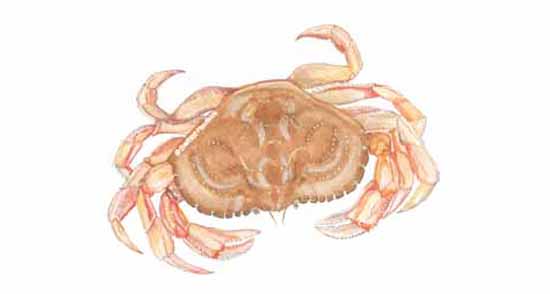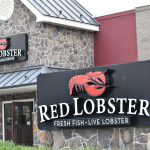Crab, Dungeness
Published on
January 23, 2014

The Dungeness crab reportedly takes its name from a small fishing village on the Strait of Juan de Fuca in Washington state. It’s also known as “San Francisco Crab,” since the species has been harvested off that city since 1848. Dungeness are commonly sold live, fresh or frozen as whole “cooks” (industry shorthand for whole, cooked crab), sections, or clusters, single legs and picked meat. Dungeness are found from Santa Barbara, California, to the eastern Aleutian Islands off Alaska in the intertidal zone and to depths of over 1,000 feet. Typically, California, Oregon and Washing-ton are the largest producers, followed by Alaska. Only males with a minimum shell size of 6 1/4 inches are harvested commercially; market size averages 1 1/2 to 3 pounds. Juvenile males and females are returned alive to the sea to ensure future harvests. The crabs are caught in circular steel traps, called pots, measuring 36 to 48 inches in diameter.
Cancer magister
Dungeness crab
Dungeness, market crab, San Francisco crab
Dormeur du Pacifique
Pazifischer Taschenkrebs
Granchio
Danjinesukani
Cangrejo Dungeness
The Dungeness crab reportedly takes its name from a small fishing village on the Strait of Juan de Fuca in Washington state. It’s also known as “San Francisco Crab,” since the species has been harvested off that city since 1848. Dungeness are commonly sold live, fresh or frozen as whole “cooks” (industry shorthand for whole, cooked crab), sections, or clusters, single legs and picked meat. Dungeness are found from Santa Barbara, California, to the eastern Aleutian Islands off Alaska in the intertidal zone and to depths of over 1,000 feet. Typically, California, Oregon and Washing-ton are the largest producers, followed by Alaska. Only males with a minimum shell size of 6 1/4 inches are harvested commercially; market size averages 1 1/2 to 3 pounds. Juvenile males and females are returned alive to the sea to ensure future harvests. The crabs are caught in circular steel traps, called pots, measuring 36 to 48 inches in diameter.
A world standard for premium crab, sweet, flavorful and semi-nutty, Dungeness has been likened to the shellfish version of an artichoke heart. Some compare the crab’s meat to that of a Maine (American) lobster, but more tender. Leg meat is slightly firmer than body meat. Live Dungeness crabs are purplish-brown in color. When cooked, the shell turns bright orange. The cooked meat is opaque white.Live crabs should be active in holding tanks. Shell color of whole cooks should be bright red; the back should not be cracked, and all legs should be attached.
| Calories: | 86 |
| Fat Calories: | 8.11 |
| Total Fat: | 0.9 g |
| Saturated Fat: | 0.1 g |
| Cholesterol: | 59 mg |
| Sodium: | 295 mg |
| Protein: | 17.4 g |
| Omega 3: | 0.3 g |
To cook live 2- or 2 1/2-pound Dungeness crabs, boil for 18 to 20 minutes, then immerse in cold water to chill. Cool and crack and then serve with melted butter or a sauce. Cooked crabs can be eaten either hot or cold. The meat can be used in seafood stews or soups, sautés, salads and appetizers, in bisques, creamed dishes, salads and casseroles.
Other crab species, Lobster meat
- Bake
- Boil
- Broil
- Fry
- Grill
- Pate
- Poach
- Saute
- Smoke
- Steam
Live
Fresh: Whole cooks, Meat
Frozen: Whole cooks, Cooked sections, Cooked meat, Blocks (meat)
Value-added: Canned meat, Pasteurized meat, Snap-
Canada, United States





